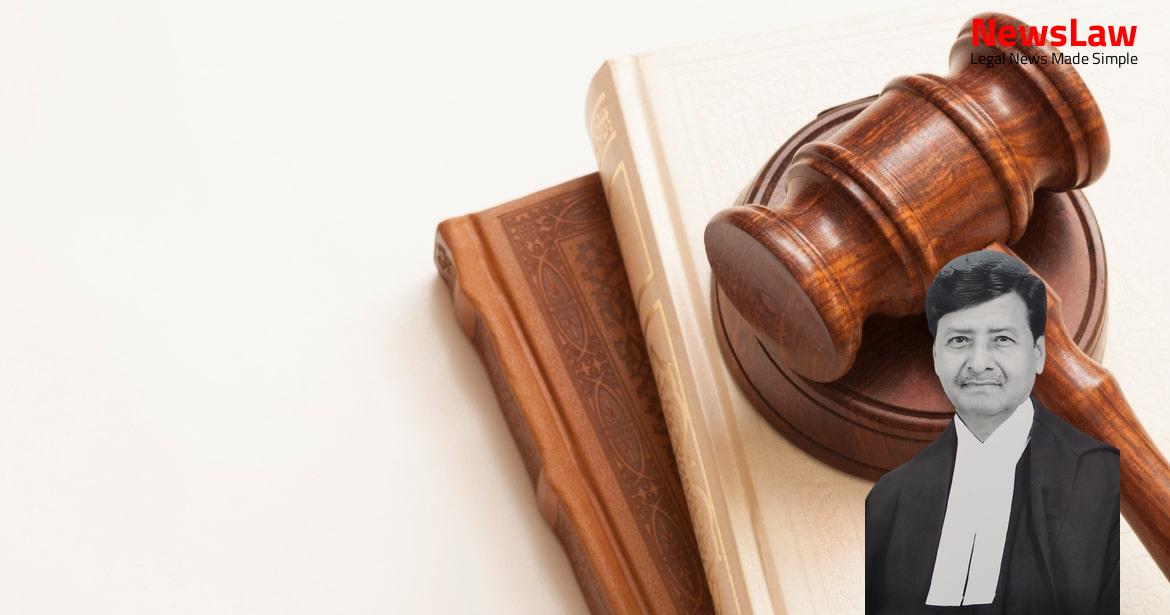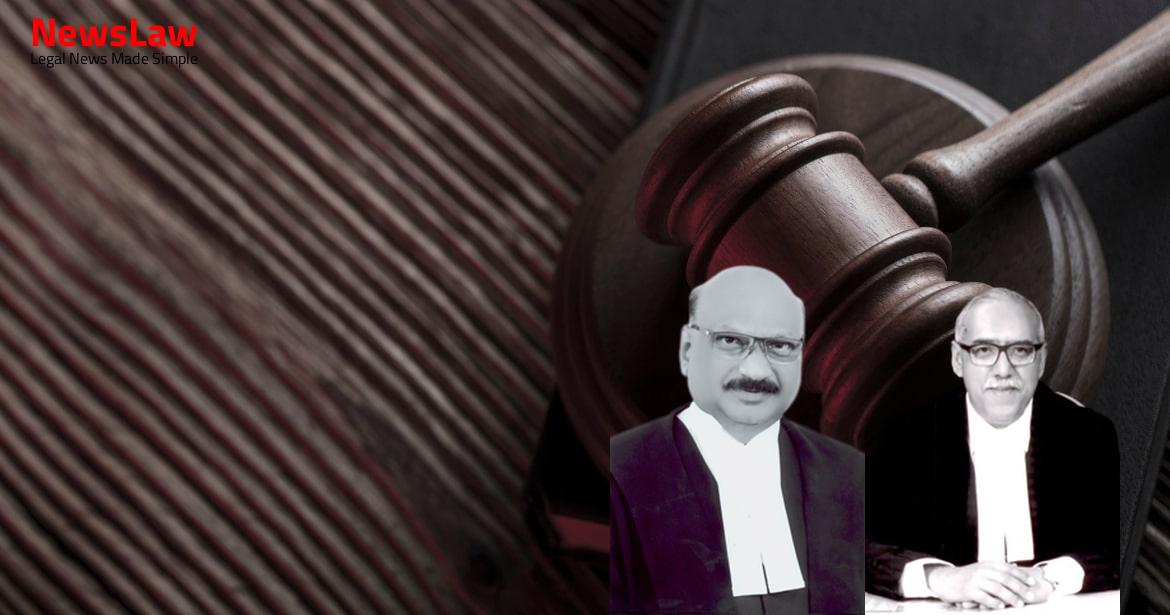A landmark decision by the Supreme Court in the case of SAIL vs. Ispat Khadan Janta Mazdoor Union has clarified crucial aspects related to contract labor and industrial disputes. The judgment delves into the complexities of employment relationships and sets a significant precedent for future cases in the realm of labor rights and regulations.
Facts
- The appeals arise from a judgment of the High Court of Madhya Pradesh setting aside the award passed by the Central Government Industrial Tribunal.
- The Tribunal had directed the reinstatement of contract labourers employed by SAIL from 1993 to 1996 and consideration for regularization.
- The matter involved a dispute raised by the Union, Ispat Khadan Janta Mazdoor Union, regarding employment at SAIL’s limestone and dolomite mines in Kuteshwar, Madhya Pradesh.
- After multiple rounds of litigation, the case reached the stage of a reference made by the appropriate Government under the Industrial Disputes Act, 1947.
- The Union’s demand for reinstatement was granted, but back wages were denied.
- The employment of contract labor through contractors was considered genuine before the notification dated 17 March, 1993.
- After the notification, the contract through contractors was deemed void and sham by law.
- Contract labor was allowed to continue in the establishment until April 1996.
- The Union has the option to pursue penal consequences under Sections 23 to 25 of the CLRA Act.
Also Read: Judgment: Dispute Resolution in Infrastructure Contracts
Issue
- Whether SAIL, being a Government of India undertaking, can be considered a State under Article 12 of the Indian Constitution
- The significance of SAIL being a Government of India undertaking and having steel plants in various parts of India
- Issues related to the status and classification of SAIL in the context of constitutional provisions
Also Read: Dismissal Upheld in Disciplinary Proceedings of CISF Constable
Arguments
- High Court used various tests to determine the nature of the contract between the contract labour and the contractor.
- Based on these tests, the High Court concluded that the contract was sham and bogus.
- This led to the restoration of the relationship between the principal employer and the contract labour as employer and employee.
- The regularisation of service and payment of salary differences were deemed justified for the contract labour.
- The respondent’s counsel argued that a previous judgment was not applicable due to the constitutional bench judgment and absence of a specific prohibition notification.
Also Read: Restitution Order in the Case of Temple Management: High Court vs. State
Analysis
- The contract between the principal employer and the contractors was found to be not genuine but rather a camouflage.
- The prohibition notification under Section 10(1) of the CLRA Act led to the conclusion that the contract laborers should be treated as employees of the principal employer.
- Automatic absorption of contract labor working in an establishment was implied in Section 10 of the CLRA Act upon the issuance of the prohibition notification.
- The contract laborers continued to work under the contractors’ supervision and control even if they were working in the principal employer’s establishment.
- The crucial issue was whether the contract was sham and bogus, a primary cause of adjudication.
- The High Court, through judicial review, reversed the finding of fact recorded by the Tribunal, considering the contract to be sham and bogus.
- The High Court observed that the contract was sham and bogus after the prohibition notification of March 17, 1993.
- The consequences of the prohibition notification included ceasing the functioning of contract labor at the time of the notification and the end of the contract between the principal employer and contractors.
- The Tribunal’s finding that the contract was not sham and bogus up to the date of the prohibition notification was deemed unsustainable.
- The Tribunal extensively examined the oral and documentary evidence and found that the contractors had control over the contract labor.
- The High Court’s decision was based on the issuance of the prohibition notification and the interpretation of public policy principles under the contract law.
- The High Court’s interference with the Tribunal’s award was deemed unjustified, as the Tribunal was the fact-finding authority.
- Mere violation of the prohibition notification did not warrant automatic absorption of contract labor, as penal consequences under the Act should be considered.
- The High Court’s finding that the contract was sham led to the contract labor becoming employees of the principal employer, according to the Constitution Bench judgment.
- The High Court’s denial of back wages to the employees was contested due to delays caused by previous legal proceedings.
- The Contract Labour System in the establishment for the work which they were doing gets abolished.
- Backwages are declined to be granted to the workers in this case due to the huge liability.
- SAIL is directed to start the process of regular employment for the workers.
- Workers employed from 1993 till 1996 are ordered to be reinstated and considered for regularization.
- The contract labour agreement being genuine and not sham, the workers are not automatically absorbed as regular employees upon issue of notification.
- Principal employer is not legally obligated to absorb contract labour upon issuance of a notification under the CLRA Act.
- After issuance of the prohibition notification in 1993, the contract with contractors became void and not genuine.
- The matter was referred for adjudication to the Central Government Industrial Tribunal after conciliation proceedings failed.
- Issues were framed by the Tribunal regarding the maintainability of the reference, the genuineness of employment through contractors, the termination of workers post prohibition, entitlement to terminal benefits, compliance with Memorandum of Agreement, and wages parity with regular employees.
- The contract labourers were not automatically absorbed in the establishment post prohibition notification as per the legal consequences discussed in relevant cases.
- The determination of the appropriate Government in relation to an establishment before 28-1-1986 depends on whether the industry is under the Central Government or State Government.
- Industrial disputes regarding contract labor should be brought before the industrial adjudicator. – The adjudicator may direct the principal employer to regularize the services of contract labor in the establishment.
- Overruling the judgment in Air India case, directions for absorption of contract labor as per that judgment will hold good and not be modified.
- In case of a prohibition notification under CLRA Act regarding contract labor employment, the contract’s genuineness must be evaluated. If found to be a ruse, contract labor is considered employees of the principal employer.
- If the contract is genuine, the regular process continues.
- Proper procedure and consultation must be followed by the appropriate Government while issuing a notification under Section 10(1) of CLRA Act prohibiting contract labor employment.
- Non-compliance of Section 7 and 12 of the CLRA Act does not invoke penal consequences.
- The CLRA Act is a complete code in itself, with penal consequences outlined in Sections 23 to 25.
- No provisions in the Act entail consequences beyond those in Sections 23 to 25.
Decision
- The Tribunal correctly determined that the contract was not sham and there would be no automatic absorption of contract labor upon issuance of a prohibition notification under the CLRA Act.
- The High Court of Madhya Pradesh erred in reversing the Tribunal’s finding of fact in its judgment.
- The High Court’s judgment dated 6 September, 2010 has been set aside.
- The respondent is advised to seek remedy for any alleged breach of CLRA Act provisions in accordance with the law.
- Any pending applications have been resolved.
- No costs are awarded in this case.
Case Title: THE DIRECTOR, STEEL AUTHORITY OF INDIA LIMITED Vs. ISPAT KHADAN JANTA MAZDOOR UNION
Case Number: C.A. No.-008081-008082 / 2011



